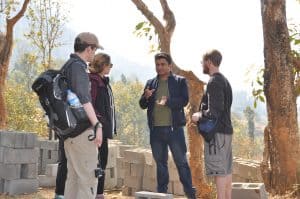Corina Sutter is Director, Government and Regulatory Affairs at RMS, and is based in London. She joined fellow employees from RMS and RMS clients on our annual Impact Trek in Nepal during March this year. This is Corina’s account of her time in Nepal.
When you think about strengthening a building to make it more resilient to seismic events, does “retrofitting” come top of mind? And if you have heard of retrofitting,

 Contributed by Paul Lewis
Contributed by Paul Lewis